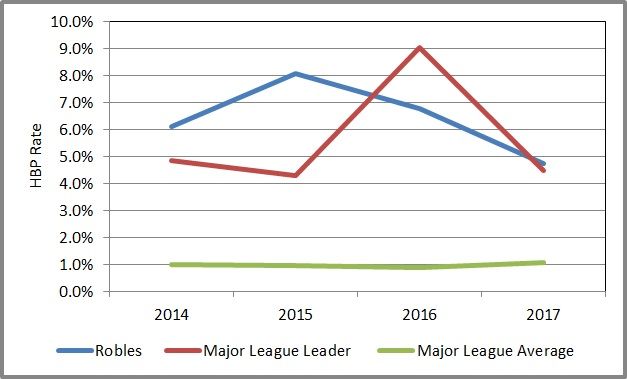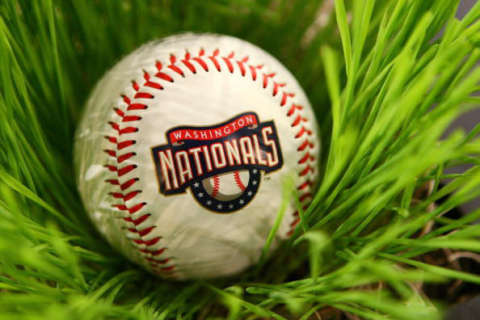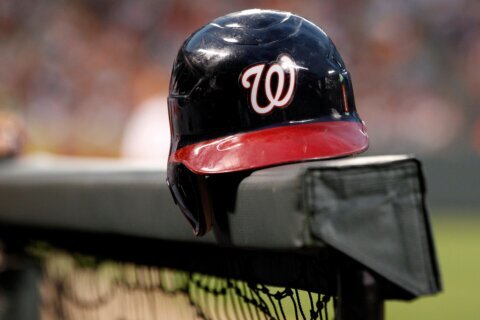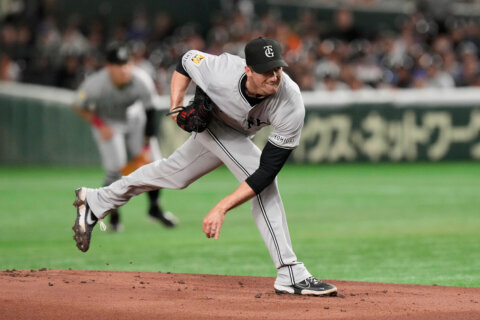WASHINGTON — I’m worried about Victor Robles.
I’m not worried about his bat. Consistently playing above his age level, the Nationals’ top prospect has a minor league average right around .300. He’s got good gap power, which may translate to 20+ home run totals as he continues to grow and fill out.
I’m not worried about his speed. He gets caught on the basepaths more than you would like to see, but appears to be a legitimate 20 stolen base threat.
I’m not worried about his arm, which Baseball America grades a 60 (above average) on the 20-80 scouting scale, and which profiles well enough to play right field in the big leagues.
Something about that slash line just doesn’t add up, though.
How can a guy hitting .299 with just 96 walks in 1,400 minor league plate appearances have nearly a .400 on-base percentage? The answer is simple, but disconcerting.
Victor Robles has been hit by 88 pitches, reaching via HBP nearly as often as he has walked in his career.
From a purely statistical standpoint, this is a good thing. It’s another way to reach base, the primary objective of a batter.
But from a practical standpoint, getting hit repeatedly by a rock-hard, 90+ mile-per-hour orb can have lasting, negative consequences. Robles has already spent time on the disabled list as a result of getting plunked on the hand.
Despite that, there are no major plans to change his approach, which is to aggressively crowd the plate.
Let’s put Robles’ anomalous numbers into some historical context. At the Major League level, nobody has been hit more than 34 times in a season since Craig Biggio in 1997, 20 years ago. That was by far Biggio’s highest HBP season (next highest was 28 in 2001), for one of the most frequently hit players in baseball history.
Robles was hit 34 times in just 110 games last year, and has been plunked at least 20 times in every season in which he’s played 60 or more games.
Biggio led the league in HBP five times, and was plunked 285 times in his career, ranking second on the all-time list. That shakes out to being hit once every 43.9 plate appearances.
Robles has been hit once every 15.9 plate appearances thus far in his minor league career, close to three times Biggio’s rate.

With the exception of utility outfielder Brandon Guyer’s insane HBP rate (31 in 345 PA) in 2016, the Major League leader has been hit at a rate of fewer than one time per 20 plate appearances the last five seasons.
Meanwhile, the Major League average is less than one hit batter per 100 plate appearances over the past five years, edging slightly above that rate this year.
There is a line of thinking that some of Robles’ high HBP rate can be attributed to the wildness of pitching at the lower levels of the minor leagues, which should dissipate as he progresses up the minor league chain.
In a very small sample at Double-A things have looked a little more promising (3 HBP in 19 games through Monday), though only time will tell.
Robles’ overall HBP rate this year is down, slightly, from its laughable 2016 mark, but would still equate to Biggio’s career high — 34 — over a full 162-game season.
Maybe that won’t matter. But after watching Trea Turner break his wrist on a 96 mile-per-hour fastball in late June, an injury that has sidelined him ever since, it’s a legitimate concern moving forward.







